第186章
The Tucuna Indians are a tribe resembling much the Shumanas, Passes, Juris, and Mauhes in their physical appearance and customs.They lead, like those tribes, a settled agricultural life, each horde obeying a chief of more or less influence, according to his energy and ambition, and possessing its paje or medicine-man who fosters its superstitions; but, they are much more idle and debauched than other Indians belonging to the superior tribes.They are not so warlike and loyal as the Mundurucus, although resembling them in many respects, nor have they the slender figures, dignified mien, and gentle disposition of the Passes; there are, however, no trenchant points of difference to distinguish them from these highest of all the tribes.Both men and women are tattooed, the pattern being sometimes a scroll on each cheek, but generally rows of short straight lines on the face.Most of the older people wear bracelets, anklets, and garters of tapir-hide or tough bark; in their homes they wear no other dress except on festival days, when they ornament themselves with feathers or masked cloaks made of the inner bark of a tree.They were very shy when I made my first visits to their habitations in the forest, all scampering off to the thicket when I approached, but on subsequent days they became more familiar, and I found them a harmless, good-natured people.
A great part of the horde living at the first Maloca or village dwell in a common habitation, a large oblong hut built and arranged inside with such a disregard of all symmetry that it appeared as though constructed by a number of hands, each working independently, stretching a rafter or fitting in a piece of thatch, without reference to what his fellow-labourers were doing.The walls as well as the roof are covered with thatch of palm leaves-- each piece consisting of leaflets plaited and attached in a row to a lath many feet in length.Strong upright posts support the roof, hammocks being slung between them, leaving a free space for passage and for fires in the middle, and on one side is an elevated stage (girao) overhead, formed of split palm-stems.The Tucunas excel over most of the other tribes in the manufacture of pottery.They make broad-mouthed jars for Tucupi sauce, caysuma or mandioca beer, capable of holding twenty or more gallons, ornamenting them outside with crossed diagonal streaks of various colours.These jars, with cooking-pots, smaller jars for holding water, blow-guns, quivers, matiri bags [These bags are formed of remarkably neat twine made of Bromelia fibres elaborately knitted, all in one piece, with sticks; a belt of the same material, but more closely woven, being attached to the top to suspend them by.They afford good examples of the mechanical ability of these Indians.The Tucunas also possess the art of skinning and stuffing birds, the handsome kinds of which they sell in great numbers to passing travellers.] full of small articles, baskets, skins of animals, and so forth, form the principal part of the furniture of their huts both large and small.The dead bodies of their chiefs are interred, the knees doubled up, in large jars under the floors of their huts.
The semi-religious dances and drinking bouts usual among the settled tribes of Amazonian Indians are indulged in to greater excess by the Tucunas than they are by most other tribes.The Jurupari or Demon is the only superior being they have any conception of, and his name is mixed up with all their ceremonies, but it is difficult to ascertain what they consider to be his attributes.He seems to be believed in simply as a mischievous imp, who is at the bottom of all those mishaps of their daily life, the causes of which are not very immediate or obvious to their dull understandings.It is vain to try to get information out of a Tucuna on this subject; they affect great mystery when the name is mentioned, and give very confused answers to questions: it was clear, however, that the idea of a spirit as a beneficent God or Creator had not entered the minds of these Indians.There is great similarity in all their ceremonies and mummeries, whether the object is a wedding, the celebration of the feast of fruits, the plucking of the hair from the heads of their children, or a holiday got up simply out of a love of dissipation.Some of the tribe on these occasions deck themselves with the bright-coloured feathers of parrots and macaws.The chief wears a headdress or cap made by fixing the breast-feathers of the Toucan on a web of Bromelia twine, with erect tail plumes of macaws rising from the crown.The cinctures of the arms and legs are also then ornamented with bunches of feathers.Others wear masked dresses; these are long cloaks reaching below the knee, and made of the thick whitish-coloured inner bark of a tree, the fibres of which are interlaced in so regular a manner that the material looks like artificial cloth.
The cloak covers the head; two holes are cut out for the eyes, a large round piece of the cloth stretched on a rim of flexible wood is stitched on each side to represent cars, and the features are painted in exaggerated style with yellow, red, and black streaks.The dresses are sewn into the proper shapes with thread made of the inner bark of the Uaissima tree.Sometimes grotesque head-dresses, representing monkeys' busts or heads of other animals, made by stretching cloth or skin over a basketwork frame, are worn at these holidays.The biggest and ugliest mask represents the Jurupari.In these festival habiliments the Tucunas go through their monotonous see-saw and stamping dances accompanied by singing and drumming, and keep up the sport often for three or four days and nights in succession, drinking enormous quantities of caysuma, smoking tobacco, and snuffing parica powder.